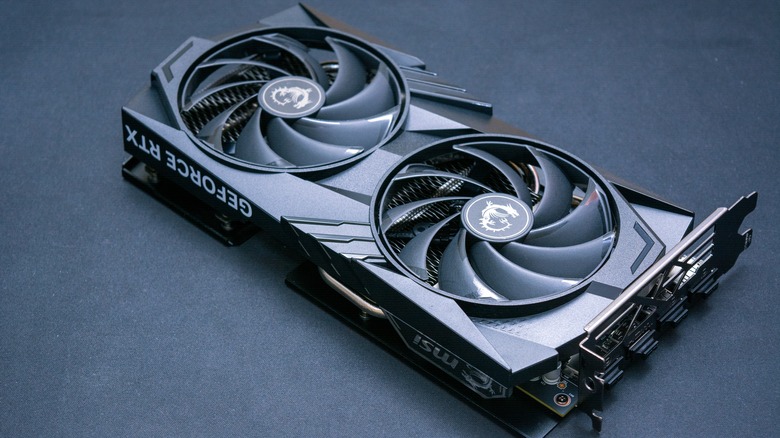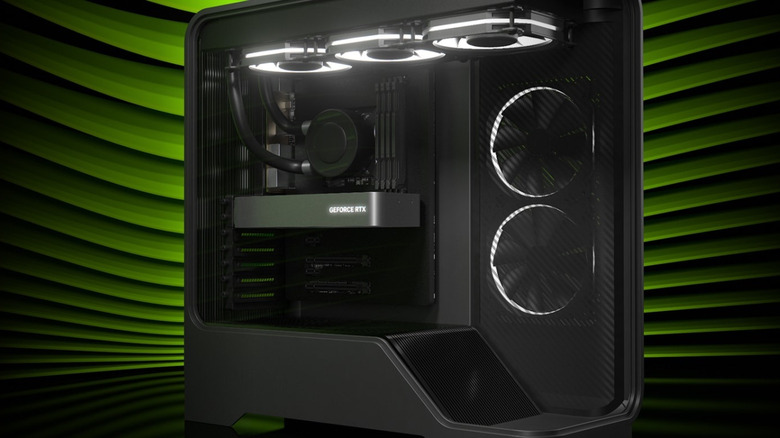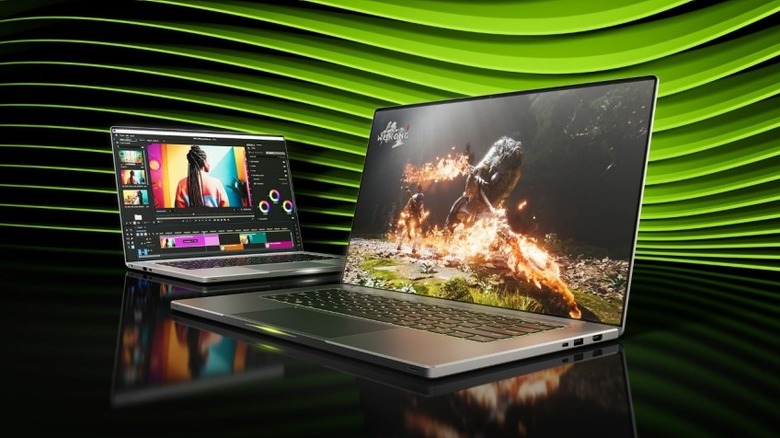Why The Desktop RTX 5050 Only Has GDDR6, According To Nvidia
Nvidia's RTX 50-series just received a new addition in the form of the RTX 5050. The card, available in laptops and desktops, is the most affordable offering for this generation, starting at an MSRP of $249. While rumors had already hinted at a laptop version of the RTX 5050, the desktop version came as more of a surprise. But perhaps the most surprising thing of all is that the desktop and laptop GPUs have different types of video memory (VRAM).
Nvidia made the surprising decision to only use GDDR6 memory in the desktop version of the RTX 5050. Meanwhile, the laptop version gets to enjoy the full benefit of GDDR7 memory. The fact that the RTX 5050 uses GDDR6 probably wouldn't raise as many questions if not for the discrepancy in the two versions of the card. The laptop RTX 5050 gets extra bandwidth from switching to GDDR7, while desktop users are out of luck.
This prompted users to reach out with questions on X, and Nvidia responded. The company's director of global PR, Ben Berraondo, replied to a few of the questions, and his response was simply that GDDR6 VRAM is the "best choice for desktops." This doesn't explain much, but there's more to the matter. Below, I'll walk you through Nvidia's answer and what this means for the RTX 5050.
Nvidia claims thermals and battery efficiency played a part
The difference between GDDR6 and GDDR7 is quite big, and it has everything to do with memory bandwidth. GDDR7 is a newer memory standard capable of transfer rates of 30 Gb/s, while GDDR6 caps out at 20 Gb/s (or 23 Gb/s for GDDR6X). Faster memory can boost GPU performance significantly, even with the same amount of VRAM. So, why did Nvidia choose to stick with GDDR6 in the desktop RTX 5050?
Nvidia's Ben Berraondo said on X that the laptop version of the card was optimized for "the best power efficiency for portable laptops with great battery life." He went on to add that GDDR7 memory brings benefits to thermals and battery life, both important factors in a laptop, especially for Nvidia's OEM partners. Battery life is not a factor in a desktop PC, but thermals are, and there would be no harm in equipping the card with better memory. It'd simply be faster and more efficient as a result.
Of course, there's still plenty to like about the launch of a new GPU. For starters, the last-gen RTX 4050 never made it to desktops, so the arrival of the RTX 5050 for desktops is a nice change. It's also refreshing to see a budget GPU get at least 8 GB of VRAM (although, as many insist, 8 GB of VRAM is not quite enough for mainstream gaming these days). However, capacity is not everything, and the difference in memory standards between the laptop and desktop versions doesn't make a lot of sense — but there might be more reasons behind Nvidia's decision.
Cost may have played a factor
Equipping the laptop RTX 5050 with GDDR7 memory is a completely sound decision. The entirety of Nvidia's RTX 50-series comes equipped with GDDR7, too, so it makes all the more sense. However, skipping the desktop version with the explanation that GDDR6 is "best" for desktops doesn't fully add up — after all, the benefits of faster memory apply to all platforms.
I'm speculating here, but I think that the cost of GDDR6 vs. GDDR7 memory might have played a part in Nvidia's decision. GDDR7 memory is more expensive, which would cut into Nvidia's profit margins. This is important since the desktop RTX 5050, priced at $249, might end up being a fairly niche product. Although Nvidia claims it'll be a lot faster than the RTX 3050, its real competitor is the RTX 5060, which has access to the same software toolkit (namely, DLSS 4, which lets you boost your frame rates a lot) and is bound to be faster. It's all in the specs: The RTX 5060 offers 3,840 CUDA cores versus 2,560 CUDA cores on the RTX 5050. The RTX 5060 also costs only $50 more, so many users will likely gravitate to the pricier but significantly faster GPU.
Equipping a budget-friendly sub-$300 GPU with GDDR7 memory would mean spending more to build a product that's unlikely to make record sales. Conversely, the laptop version could end up in many entry-level laptops, and the potential for more sales, thanks to better thermals and battery life, might have led to this decision. While it's a shame for desktop users, the RTX 5060 and Intel's Arc B580 are compelling alternatives.


